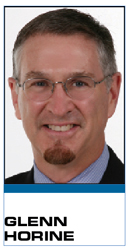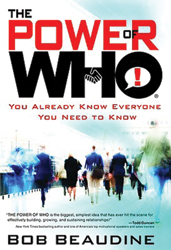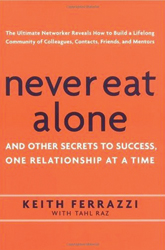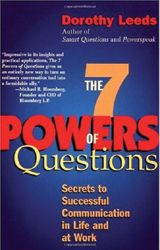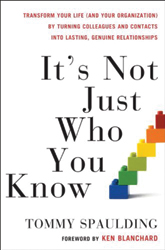During my household’s annual January toy purge, I rediscovered one of my all-time favorites: Tinkertoys. Its interconnection of disparate wooden spools and sticks got me thinking about personal connections and the art of building one’s network.
It seems everyone nowadays is networking — either because they’re out of work, not happy in their current job, or fearful that a pink slip is around the corner. And as with Tinkertoys, a variety of access points, when properly interconnected, serve to strengthen one’s networking foundation. Among those access points: education, job experience, geography, aspirations and social media, to name a few. Relying on just one or two can be limiting, but together they form a platform for endless career possibilities.
For the natural-born networkers in our industry, this is all second nature. For the rest of us, it requires real work. Here are a few best practices you may want to employ when “tinkering” with your own network.
Build relationships, not just contacts
Remember the secret to a successful first date? Talk about the other person, not yourself. That axiom applies to new professional contacts as well. To elevate a new contact into a meaningful relationship, think the 80/20 rule. You’ll be amazed how positively someone will respond to you when 80 percent of the conversation is about them.
For this to happen, research and plan your initial discussion. Then focus the discussion on your “date” — their family, accomplishments, alumni associations, etc. — before asking questions that pertain to your professional needs. A few other tips:
• Position your initial meeting as an informational interview (not a job interview). Ask for 15 to 30 minutes of their time and aim to build their immediate trust.
• When meeting someone new, observe, listen and ask before sharing your story. Keep in mind which brand you are promoting: your company’s, your own or that of the person you’re talking to. Strive to be low-maintenance, offer easy accessibility, and be respectful with contact frequency and cumulative needs.
• Read any or all of the following relationship-building books:
Bob Beaudine’s “The Power of Who!” — A renowned sports industry headhunter shares his
philosophy on how to identify your dream job and get where you want to go with the people that you know.
Keith Ferrazzi’s “Never Eat Alone” — Timeless strategies on how to build, nurture and maximize your relationships through genuine give-and-take.
Dorothy Leeds’ “The 7 Powers of Questions” — People who ask questions in business and in life are more respected and, usually, more successful.
Tommy Spaulding’s “It’s Not Just Who You Know” — The secret to achieving your full potential in life is reaching out for the support, insight and influence of others.
“With credibility comes access and then trust. This allows you to connect with other people and their networks, which in turn increases your perceived value.”
Lorenzo Sciarrino,
Account director, corporate
partnerships, Los Angeles Dodgers
There’s no substitute for sincerity
If you are genuinely sincere and supportive in your relationships, new opportunities will arise that you never imagined. Be organic in your approach and invest in enabling others to succeed. Seek to introduce smart and interesting people to each other (which, in turn, will make you more relevant). More often than not, our most fruitful discussions are those in which we have no expectations.
That said, of course, it’s important to have a plan in place.
• Think aspirationally. Where do you want to work? Who do you want to work for? Develop a definitive, goal-oriented network strategy for yourself.
• Think strategically. Categorize your contacts by job disciplines (e.g., sales, marketing, operations, etc.) and industry sectors (e.g., property, agency, media, sponsor/advertiser, etc.). Work to connect holes in your network that matter most.
• Think reciprocally. Allocate your time based on a contact’s “net value” using this instinctive guide:
Relationship strength
Personal depth: Insights beyond business and current events.
Rate of communication return: Within 24, 48 or 72 hours, later or never.
Frequency and quality of in-person meetings.
Industry influence
Area of interest: Knowledge base of contact.
Position of authority: The power to persuade a hiring decision.
Intangibles: Intuitive perspective and their desire to use political capital on you.
“Treat people the right way. You never know who can one day be helpful to you. The interns and admins of yesterday might today help connect you to someone who might make a difference in your career.”
Kevin Sullivan
Founder,
Kevin Sullivan Communications
Commit to the Golden Rule
Networks can seem hierarchical, but with today’s sputtering economy and constant management shuffles, relationship structures can turn upside down in an instant. Remember the Golden Rule. Manage your relationships with a disciplined give-first, take-second approach. Think about how you can build relationship currency with your contacts when you’re not in need.
• Review your entire network at least twice a year.
Implement a system that strengthens, re-engages or discards dormant relationships.
Build a tickler system to reach out to contacts when there’s no personal gain and/or business need.
Plan ahead on business trips and meet with infrequent out-of-town contacts.
• Be a friend
Send hand-written notes for thank you’s and special occasions: birthdays, anniversaries, holidays, new jobs, promotions, get well, etc.
Respond to all communications within 72 hours.
Meet face-to-face whenever possible.
Support your local community and volunteer your expertise.
Augment your network with industry associations (e.g., National Sports Marketing Network, WISE, Sports Lawyers Association, etc.) and digital outlets such as Meetup.com, ExecuNet, LinkedIn and/or Facebook’s BranchOut.
Never send blind connection and/or endorsement requests; contact the person first to gain their permission, then if needed, make any requested task (e.g. testimonial) as simple as possible.
Successful networking is a team effort led by a personal touch. The more you give of yourself to enrich your relationships and their success, the greater the likelihood that opportunity will knock on your door — often when you least expect it.
Glenn Horine (ghorine@handhconsulting.net) is the executive director of Iona College’s Center for Sports and Entertainment Studies, a business development consultant and industry career counselor/lecturer.


